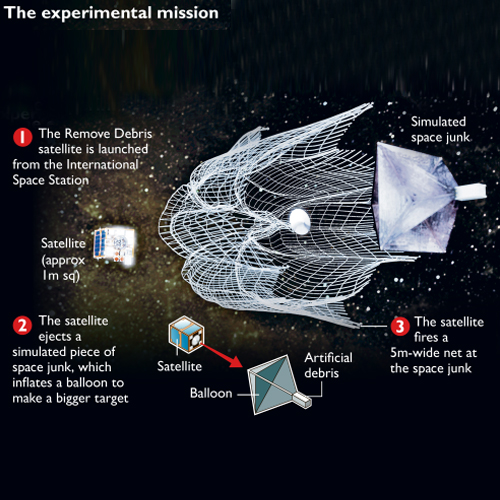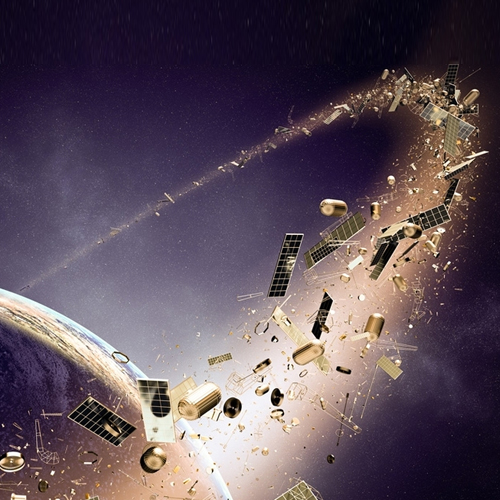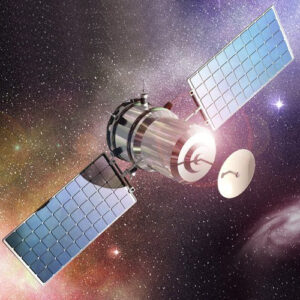Junk and Human Spacecraft
There are more than half a million pieces of debris, otherwise referred to as “space junk,”
This debris is monitored as they orbtit the Earth at speeds of 17,500mph.
At these speeds, they can cause catastrophic damage if they hit a satellite or spacecraft.
The rate in which space debris is created increases the risk that an impact will occur, destroying our vital space infrastructure or injuring spacecraft with humans aboard, such as the ISS.
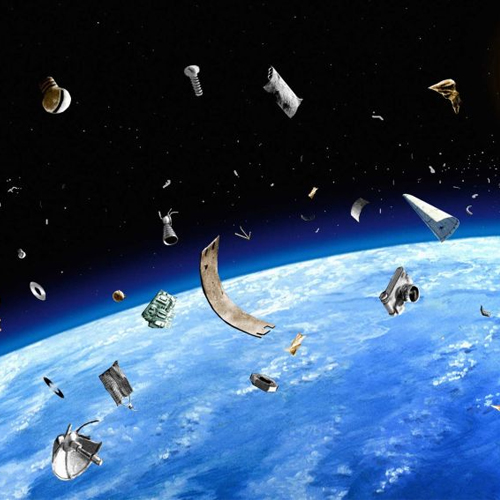
Threat of Collision
The threat of collisions with space debris is something that NASA considers very serious.
NASA maintains a set of guidelines on how to deal with potential threats of collision.
These guidelines are a part of larger body of decision-making aids known as flight rules.
Flight rules specify the risk to proximity ration of space debris in relation to a satellite or spacecraft, and the evasive maneuvers that are required to prevent impact.
Debris in Orbit
Meteoroids and man-made particles, such as end of life satellites comprises of the majority of space junk.
Meteroids are in orbit around the sun, whereas the artificial made made items are in orbit around the Earth.
As a result, the later is referred to most commonly as orbital debris.
Typical orbital debris is comprised of
- Space Missions debris and fragmentation debris
- Abandoned launch vehicle stages
- Non functioning spacecraft
Over 20,000 debris larger than a cricket ball are hurtling at speeds of 17,500mph around the Earths globe.
Many smaller pieces of debris are as large as a marble; numbers estimated over half a million.
And finally, there are millions of debris that are small enough that it is not possible to track them.
The size and velocity of any debris would be enough to partially damage or even destroy completely a space craft or satellite.
The greatest risk to space missions comes from non-trackable debris
– Nicholas Johnson
Chief Scientist at NASA for orbital debris
However, despite that the fact that there are millions debris orbiting around the Earth, reports of disastrous impacts have been few and far between.
Here’s what we do know:
- 1996 – a French satellite was impacted and damaged by space debris from a French rocket that had exploded a 10 years earlier.
- 2007 – More than 3,000 pieces of space debris was created when an anti-satellite test was carried out.
A missile was fired at an old weather satellite - 2009 – An end of life Russian satellite impacted a functioning commercial U.S. Iridium satellite.
This collision created more than 2,000 pieces of debris.
This debris was large enough to be tracked.
Tracking the Debris
The US DoD (Department of Defence) maintains a highly accurate satellite catalog on all objects in Earths orbit that can be tracked.
DoD in conjunction with NASA share responsibilities as the co-operate for mapping out everything in orbit.
The US DoD tracks objects in LEO and Geosynchronous orbit of between 5-100cm in size through their Space Surveillance Network.
Officially there are around 15,000 objects in orbit that have been officially cataloged.
Further to this, the number of tracked objects is beyond 21000.
NASA is able to determine the size of these objects by using ground-based sensors and inspecting the surface of satellites as they return from Orbit.
Object Risk Asssessment
Objects that are at risk of collision are divided into multiple risk categories based upon their size.
- 10cm+ Conjunction assessments and collision avoidance maneuvers are effective in countering objects which can be tracked by the Space Surveillance Network
- 1-10cm Objects of this size are generally too small to track and too large to shield against.
- <1cm Debris shields can be utilized to protect from impact.
Planning for Debris & Reacting
There are guidelines created by NASA that are used to assess whether evasive actions are required to avoid collision with space debris.
The guidelines of NASA include a boundary of 1.5m high x 50km width x 50km length around a space craft, with the space craft in the center.
When collision predictions indicate that the debris will pass close enough to the boundary and the quality of the tracking data is deemed accurate to a sufficient level, Houston and Moscow Misson Mission Control centers work together to develop a course of action.
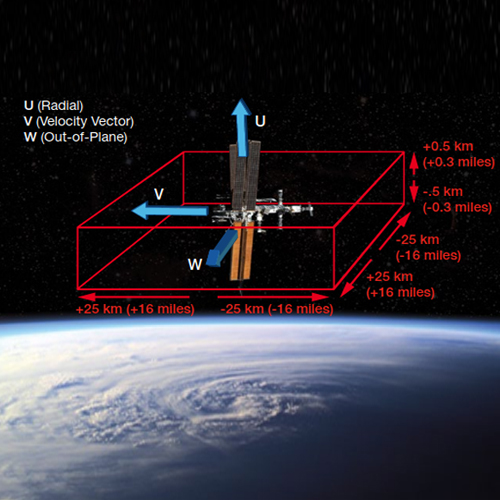
These encounters are often known in advance, and as a result there is time to initiate ‘debris avoidance maneuvers’, which involve move the space craft outside of the boundary, enough to avoid an impact.
At times the debris tracking data isn’t accurate enough to warranty an avoidance maneuver, or the pass isn’t identified by the time in which it would take to make a maneuver.
In these cases, mission control will order the crew into the transportation pods used for access to and from the space craft.
By moving crew into the escape pods, enough time is allowed so that if a collision occurred, they would be safetly be able to exit the space craft should there be a loss of pressure with the life-supporting module or critical components are damaged beyond repair.
Mission Control also can also take additional precautions such as air locking hatches.
Spacecraft Maneuvers to Avoid Collision
Maneuvers to avoid debris are planned if the probability of a collision reaches a set limit.
The probability of an impact is larger than 1 in 100,000, a maneuver will be undertaken if it will not significantly impact objectives of the mission.
If the risk is greater than 1 in 10,000, a maneuver will be undertaken unless it will result in a greater risk to the crew.
The maneuvers for the avoidance of debris are generally small and occur from one, t o several hours before impact.
Manuevers can be scheduled and carried out within a matter of hours.
Cleaning Up Space Debris
Researchers are developing a cleanup cubesat called OSCaR, an acronym for Obsolete Spacecraft Capture and Removal).
OSCaR would would hunt down and bring debris out of orbit at low cost by using tethering methods and nets.
As a result, OSCaR would be able to achieve this relatively autonomously, with little guidance from controllers on the ground.
